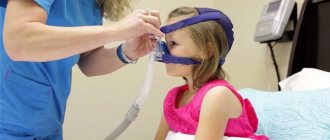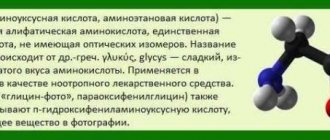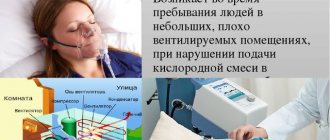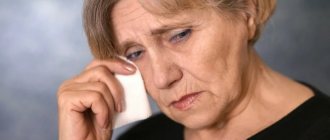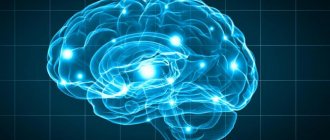Tremor in newborn babies is manifested mainly by twitching of the chin and upper limbs. It can be considered a similar manifestation of muscle hypertonicity, which is the main sign of an immature nervous system of a baby. Tremor in infants manifests itself mainly due to overexcitability of the nervous system when the baby screams, cries, and also when he wants to eat, or someone frightened him. Parents may also notice that their child's eyeballs move during sleep. This usually occurs during a phase of sleep called REM sleep.
Tremor in newborns is not a rare phenomenon; it occurs in almost 50% of all children born. From the first day of life until 4 months, signs of tremor are considered normal, but if they do not disappear after this period, then you need to take a closer look at the baby. It may be worth consulting a doctor at this point. But if the hands and chin have not stopped shaking even after a year, then this is a clear signal about problems with the child’s health. To understand when tremor is a benign specific condition of the nervous system, and when it is a serious problem, we suggest that you read this article.
The children's nervous system lends itself well to “regulation”. Therefore, the sooner you notice the problem and receive qualified help, the greater the chances of normalizing the state of the central nervous system and restoring it.
What is most affected by involuntary shaking in children?
If you look at the statistics, you can make an unambiguous conclusion - often almost all babies have head tremors. This is what indicates the incomplete maturity of the baby’s nervous system. When a baby's arms or legs, as well as lips and chin, shake, this is already a consequence of prematurity.
Parents should also understand that such phenomena do not occur in every child. Therefore, you should not immediately panic while waiting for your baby.
Tremor in children: main causes
As mentioned above, the culprit may be the immaturity of the nervous system. But other factors, such as premature birth and fetal hypoxia, can also lead to trembling.
The child's immature nervous system
After birth, children do not yet have developed coordination of movements, and their nervous system has not reached the required stage of maturity. This is what most often causes chin tremor in infants, as well as trembling of the limbs. A violent outburst of emotions, which increases the level of norepinephrine in the body, also contributes to the appearance of trembling of the baby’s arms and legs. Increases the chances of developing this phenomenon and muscle hypertonicity.
Fetal hypoxia
Fetal hypoxia, which can develop both in utero and at the time of birth, has become a fairly common problem. Lack of oxygen, especially long-term, negatively affects brain function. A number of factors contribute to the development of hypoxia:
- Disorders of the functional activity of the placenta.
- An infection that developed in utero.
- Increased tone of the uterus when the mother is threatened with miscarriage.
- Bleeding during pregnancy.
- Polyhydramnios.
All these factors limit the supply of oxygen to all cells of the body, including the brain, which also affects the development of the nervous system. In addition, oxygen starvation can be caused by the characteristics of labor (rapid labor and weak contractions), entanglement of the fetus in the umbilical cord, and placental abruption.
Premature birth
Chin tremor in newborns born prematurely also occurs due to the immaturity of the nervous system, since the baby was deprived of continued intrauterine development. Therefore, the central nervous system of a premature baby continues to form outside of the baby’s presence in the womb, and these can hardly be called optimal conditions for this process. No matter how attentively and carefully the mother treats the baby, she is not able to provide him with the atmosphere that was in her stomach. Therefore, we can safely say that limb tremors in children in any case depend on the maturity of the nervous system.
Chin tremor in newborns
Underdevelopment of the centers of the nervous system leads to the appearance of tremor. Since these centers are responsible for the work of the torso, the lower and upper limbs, as well as the facial muscles, may begin to contract involuntarily. Tremors are usually caused by excessive release of norepinephrine.
The cause of the development of pathology can be even the most minimal deviations during the critical period of development of the human nervous system.
It is very important to monitor your baby's development, especially at three, nine and twelve months. The most minor deviations should be a reason to visit a neurologist. Prolonged tremor may indicate that the child's nervous system was injured during development in the womb or during childbirth.
Causes of tremor:
- The nervous system is still immature;
- Fetal hypoxia occurred during pregnancy;
- Prematurity.
Chin tremor usually goes away when the baby reaches three months of age. An alarming symptom is simultaneous tremor of the legs, arms and chin. A tremor that does not go away after a couple of weeks or a month is considered dangerous.
Targeted treatment and its necessity
Based on the data available to doctors, we can say that the concern is caused by tremor that persists for 4 months. In this case, the shaking spreads to the baby’s legs and head, and the mother knows for sure that the baby is not shaking at certain moments (hunger, fear, etc.). Parents should understand that such a phenomenon may be a warning sign of the following problems:
- Hypomagnesemia.
- Increased blood sugar levels.
- Intracranial hemorrhage.
- Drug withdrawal or withdrawal syndrome.
- Hypoxia-ischemia of the brain.
- Increased intracranial pressure.
- Low calcium levels in the blood.
- Sepsis.
In these cases, the doctor will definitely prescribe you a full examination and appropriate treatment.
What is the treatment
If a child’s arms, legs or head are shaking, then treatment should be aimed not only at restoring the state of the nervous system, but also at health in general. That is why the mother must strictly follow the neurologist’s instructions and adhere to all recommendations. Most often, medications such as Glycine, Asparkam, etc. are prescribed. But only a pediatric neurologist can identify the exact cause of trembling limbs and prescribe medications. Therefore, self-medication is dangerous.
But the procedures that are necessarily prescribed for children suffering from tremors are simply necessary. First of all, this is massage, gymnastics and swimming.
Causes of runny nose in newborns
There may be several options for why a newborn baby has a runny nose. The disease is not necessarily caused by a virus that will soon make the whole family sick. Let's look at the main causes of runny nose in children under one year old.
| Cause | More details | How to solve? |
| Infection | Every day a person is exposed to thousands of viruses and bacteria. A baby's immune system cannot always cope with it, and catching a cold - especially in late autumn and winter, when the risk of hypothermia increases significantly - is as easy as shelling pears. The infectious nature of the disease is primarily indicated by an elevated temperature in the baby. | In this case, do not try to completely cure a runny nose in a newborn baby on your own - consult a pediatrician for qualified help, and if the temperature rises above 38 °C, call an ambulance |
| Foreign body in the nasal passage | Try not to leave your newborn baby unattended and surround him with age-appropriate toys. Indeed, during the game, out of a desire to get to know better the objects that were encountered for the first time in his life, the baby can shove a small part into the nasal passage. And an adult will not be able to detect this in a timely manner, not to mention painlessly removing the foreign object and again allowing the child to breathe freely | If you cannot free your child's nasal passage on your own, consult a doctor. If the object is large and causes obvious pain to the baby, call an ambulance or rescue service |
| Insufficiently humid and/or too dusty air in the apartment | It is impossible to imagine life in the Russian climate without central heating, and in the off-season - without additional heaters. Unfortunately, artificially increasing the temperature in residential premises has a noticeable disadvantage: the air becomes dry, and breathing such air constantly is extremely unhealthy for health, especially the health of a small child. | It is necessary to monitor the humidity level throughout the apartment and especially in the children's room. Children's doctor Evgeniy Komarovsky recommends maintaining a humidity level of 60% in the nursery and increasing it by 10% if the baby is sick: the more humidified the air is, the less the mucous membranes dry out, which means nasal congestion goes away and breathing becomes easier. For a newborn, this is even more important - after all, due to physiological characteristics, an infant cannot breathe through his mouth. Fortunately, the modern market provides a decent selection of humidifiers with different options. If at the moment your family cannot afford to buy household appliances, humidify the air with a spray bottle, place containers of water in the children's room, or hang wet sheets |
| Allergic reaction to pet hair, certain components of the diet, household chemicals, etc. | If an allergy occurs in an infant, a runny nose can become one of its symptoms, accompanied by watery eyes and frequent sneezing. | It is necessary to determine as soon as possible what caused the allergic reaction and eliminate the allergen from the baby’s environment or diet. Antihistamines may be needed to treat allergies, but should be prescribed by a doctor. Do not self-medicate under any circumstances, this can be dangerous for the health and even the life of your child - especially when this life span is only a few months |
Massage treatments for tremors
At home, giving a baby a massage is quite simple, and any mother can handle it. The main thing is to combine massage with constant conversations with the baby. The main movements of massage include kneading, stroking, rubbing and vibration. Usually the doctor himself gives an example of how you should do a massage. But you can also watch a special video below.
In the meantime, I would like to say that during the session your baby should feel as comfortable as possible, because all your actions are aimed specifically at strengthening the child’s nervous system. Therefore, it is worth remembering some rules:
- Ventilate the room well.
- Before the massage, be sure to remove your rings and bracelets so as not to scratch your baby. It is also a good idea to cut your nails.
- Rub your palms together and knead your hands.
- Massage should be done only when the child is active and in a good mood.
- If during the process the child’s mood worsens, then stop the session. The baby should calm down and become cheerful again.
- Do not bring your baby to the clinic for a massage. It’s better to hire a massage therapist and introduce him to the child so that he can get used to a stranger. Ideally, it is better to do the massage yourself in an atmosphere familiar to the baby.
- Nothing should irritate the child. It is better to eliminate loud music, bright lights and other external factors before the massage session.
- Be sociable and affectionate with your child. Songs, rhymes and funny jokes are the best accompaniments to any procedure.
- Do a massage half an hour before water treatments. This way you can provide your baby with even more “relaxation”.
Swimming and gymnastics
If you have not yet decided to send your baby to infant swimming, then you can carry out water procedures at home. If a child has tremors of the limbs, then it will be extremely useful for him to swim, even while in your arms. Let the baby have plenty of play with his hands and feet, and let the water in the bathroom be at the most comfortable temperature.
Gymnastics for a baby is also useful. There are a number of exercises that you can also do with your baby at home.
- Grab your baby's foot with one hand and tap the outside of his leg with the other. This exercise is called the “hammer” and is repeated on both legs alternately.
- Stroke your baby's arms and legs. Take the baby by the hand and, shaking it slightly, lower yourself from the shoulder to the wrist. This exercise should be performed on the legs and arms alternately.
- Stretch your baby's buttocks. To do this, place the baby on his tummy and just lightly tap his butt with your little fists.
Remember that tremors are a completely natural phenomenon and should not cause you to panic. But you must monitor your baby daily. Children under one year old continue to develop, so you need to not miss the moment when you, together with a specialist, can make any adjustments. Doctors note several critical periods in a baby’s life. These are 1, 3, 9 and 12 months. It is at this time that the nerve endings become very sensitive, and any deviation can cause pathologies. Therefore, the future health of your baby depends on your attention and participation.
Causes of tremor
Depending on the reasons for which the tremor was caused, its specific type is distinguished:
- muscle contraction in a relatively healthy person - during physical activity or even at rest - is called physiological tremor of the arms, legs or other parts of the body. This may be a transient phenomenon that does not indicate the presence of any pathology in a person. However, often this type of tremor after exercise or not in relation to it is one of the early symptoms of Parkinson’s disease;
- tremor after the patient has made a movement of any part of the body is called intentional and may indicate the presence of more or less serious dysfunction of the cerebellum. In turn, such disorders can be caused by excessive consumption of strong drinks, as well as some neurological diseases;
- A tremor that has no apparent cause and begins to develop in a patient at a relatively young age is called essential. It may worsen after drinking caffeine-containing drinks and certain medications, as well as during moments of extreme excitement or emotional overstimulation. Essential head tremor is a common pathology in elderly patients. If the vocal cords are also involved in the pathological process, then the patient’s voice also becomes trembling.



